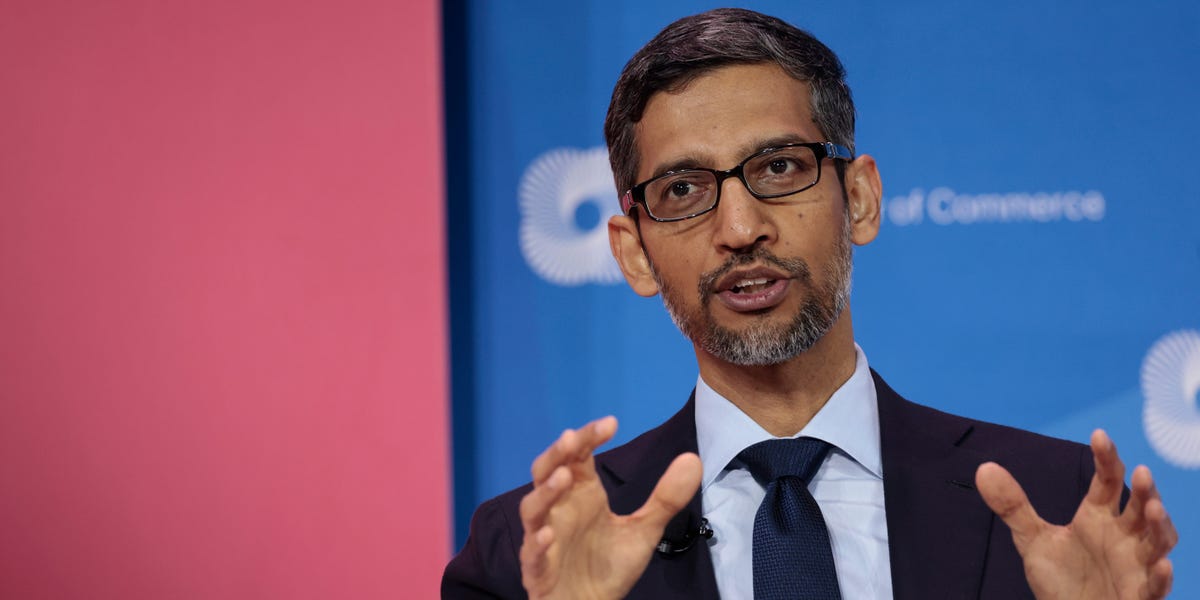Google has bet on artificial intelligence to increase the performance of ad campaigns and restore ad revenues, after Apple’s privacy update made it difficult to target consumers online.
One of its most important products is its two-year-old tool called Performance Max, which uses AI to determine where ads should run across Google sites, including YouTube, search, and display. Google has recently started pushing this product more to smaller and mid-sized marketers.
Performance Max has been of particular interest to retailers, who use it to find customers and drive sales, according to multiple ad agencies.
The ad agency Tinuiti, for instance, noted that during the third quarter, more than 90% of retailers’ spend on Google’s popular shopping listing ads were bought using Performance Max. Performance Max also drove retailers’ spend with Google’s shopping ad products up 16% year-over-year, according to Tinuiti.
Other performance-focused ad agencies have also increased their spend on this tool. Marketing agency Belardi Wong said that 68% of Google ads for retailers are bought using Performance Max, up from 50% last year. Digital agency Arm Candy said that 45% of retailers’ Google spend is handled with Performance Max. A fourth agency said that 60% of retailers’ spend on shopping ads with Google goes to Performance Max.
Some advertisers are wary of Google’s AI
But as Performance Max proliferates in the ad ecosystem, advertisers are also becoming wary of its claim to algorithmically conjure up improved ad performance, without any transparency into how it does it or where the ads actually run.
Arm Candy will pull back on Performance Max spend this year, said its director of ad operations Zach Thompson, because it cannot control where Google’s AI decides to place ads, which makes it hard to track and measure. For example, Performance Max often buys a mix of YouTube, search, and display advertising for a campaign, but advertisers use different formats for different goals.
For instance, YouTube is typically used for building brand awareness whereas a search ad is used to drive sales or conversions.
Performance Max’s buying can also be inconsistent — sometimes it heavily buys YouTube inventory and other times it heavily buys display ads, Thomas said.
Arm Candy will divert spend from Performance Max to traditional campaigns managed by humans, he said. Arm Candy has also developed its own internal tool that analyzes where ads ran to get a more granular look at Performance Max, he said.
“We’ve found that turning off Performance Max leads to better performance,” Thomas said.
Separately, Dentsu-owned digital agency Merkle also found performance declined after using Google Performance Max, the trade publication MediaPost reported.
Brendon Kraham, VP of global ads for search and commerce at Google, said that Performance Max intentionally buys a mix of different ad formats, and dips in performance are based on how many ads are available for it to buy.
An executive at a second performance ad agency who requested anonymity to preserve their relationship with Google also said that their agency plans to pull spend from Performance Max and reallocate the budgets towards managed shopping campaigns.
Specifically, the source said that the return on ad spend of Performance Max campaigns started slowing down this summer. ROAS is a key metric that measures how many sales can be attributed to every dollar.
After this decline, Performance Max started improving its results by buying brand search campaigns, this person said. Brand search campaigns are when companies buy search ads against their own brand names, like Hershey’s buying “Hershey’s” keywords, for example. These campaigns typically perform well.
“Brand search terms were being pulled into Performance Max, which is what was making Performance Max look so good,” the agency exec said.
The agency exec was surprised to learn that Performance Max was buying brand search terms. Marketers usually want these campaigns to be managed by people instead of AI, to make sure that budgets aren’t blown too quickly.
Google’s Kraham said that Performance Max can chip into other search budgets. He also said that buying search ads alongside Performance Max is often a best practice for marketers and can increase conversions 18% on average, he said.
“PMax may buy additional impressions and search that you were not buying, but that will deliver the exact ROI that you cared about,” he said.
Advertisers that like Google’s AI say it helps them find new customers
Google has tried to address advertisers’ concerns about what Performance Max buys. In July, Google added the ability to exclude specific keywords from Performance Max campaigns. Other recent features include options for marketers to focus Performance Max only on finding new customers.
And some agencies like Belardi Wong continue to spend with Performance Max, even though they can’t fully control the campaigns, because it has helped find new customers by finding people higher up in the so-called “sales funnel.” These customers are at the beginning of considering a purchase.
“That kind of funnel expansion — as challenging as it is for marketers in losing some visibility and control — is a reason why we’re shifting more spend,” said Calla Murphy, VP of digital strategy and integrated marketing at Belardi Wong.
Read the full article here





